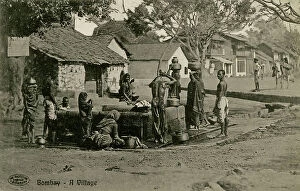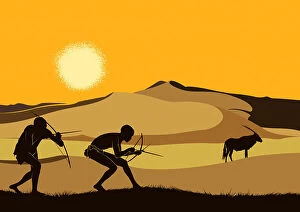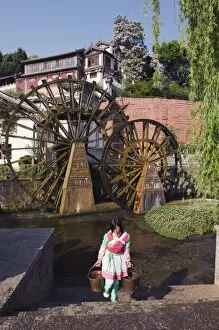Water Source Collection
"Exploring the Lifeline: Tracing the Evolution of Water Sources" Water, a vital resource that sustains life
For sale as Licensed Images
Choose your image, Select your licence and Download the media
"Exploring the Lifeline: Tracing the Evolution of Water Sources" Water, a vital resource that sustains life, has been an integral part of human existence since time immemorial. From the San Hunter-gatherers in Africa to modern-day societies, our relationship with water sources has evolved significantly over centuries. In 1857, "A Woodland Well" captured on canvas depicted a serene scene where people gathered around a well, drawing water for their daily needs. This artwork serves as a reminder of how wells were once pivotal meeting points and lifelines for communities. "The Well Driller, " painted between 1873-74, showcases the industrious spirit of individuals who dedicated themselves to digging deep into the earth's crust to tap into hidden water reserves. Their efforts ensured access to clean drinking water and irrigation possibilities. The 19th-century masterpiece "The Old Draw Well near Golspie, " portrayed in delicate watercolors, transports us back in time when rural landscapes relied heavily on these traditional wells for survival. The image encapsulates both simplicity and resilience. A captivating black-and-white photograph from c. 1860-70 titled "Peasants around a well in a farmyard" offers glimpses into agrarian societies where communal wells fostered social interactions while quenching thirsts amidst hard work under the scorching sun. Moving forward through history brings us to more contemporary examples like the Fosse Dionne wash-house constructed around its namesake natural spring—a testament to humanity's ingenuity in harnessing nature's gifts sustainably. Venturing beyond borders takes us to Vietnam's UNESCO World Heritage Site - Hoi An - where we find the Historic Ba Le Well standing tall as an architectural marvel that not only provided essential hydration but also served as cultural heritage worth preserving. Nature too plays its part.











